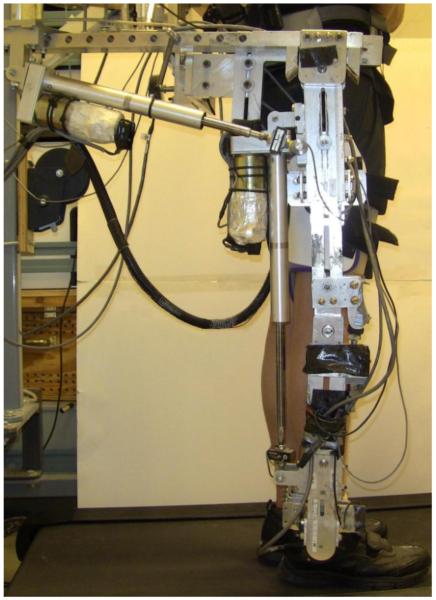Figure 1.
Subjects wore the robotic leg exoskeleton on their right lower limb. The unilateral robotic leg exoskeleton has four segments, i.e., pelvis, thigh, shank and foot that can be adjusted to each subject’s stature. The exoskeleton design allows for sagittal plane movements (e.g., flexion/extension) of the hip, knee and ankle, frontal plane movements (i.e., adduction/abduction) of the hip, and trunk rotation. The linear actuators at the hip and knee joints power the sagittal plane joint movements.

